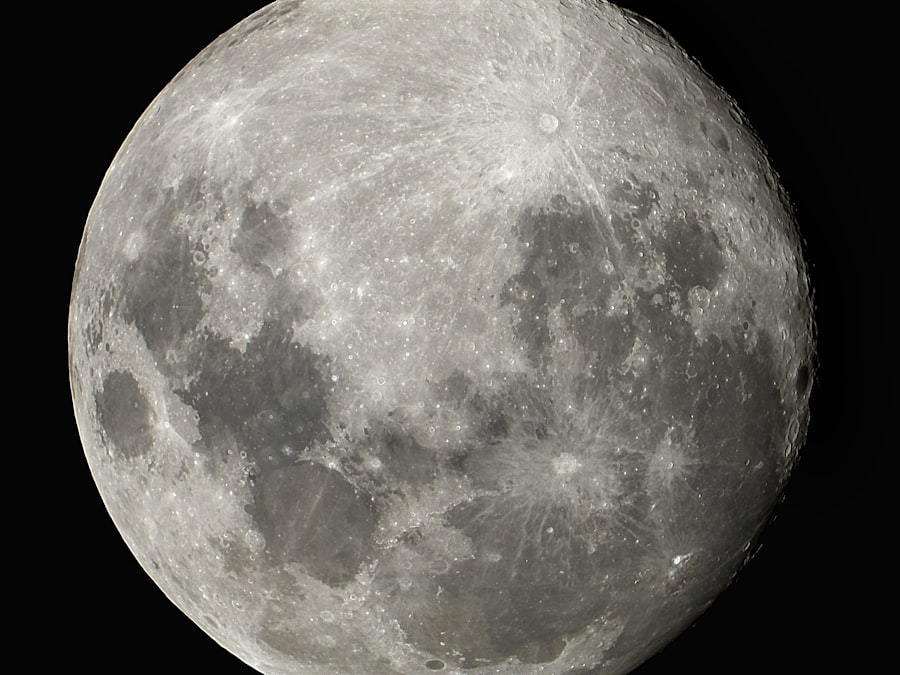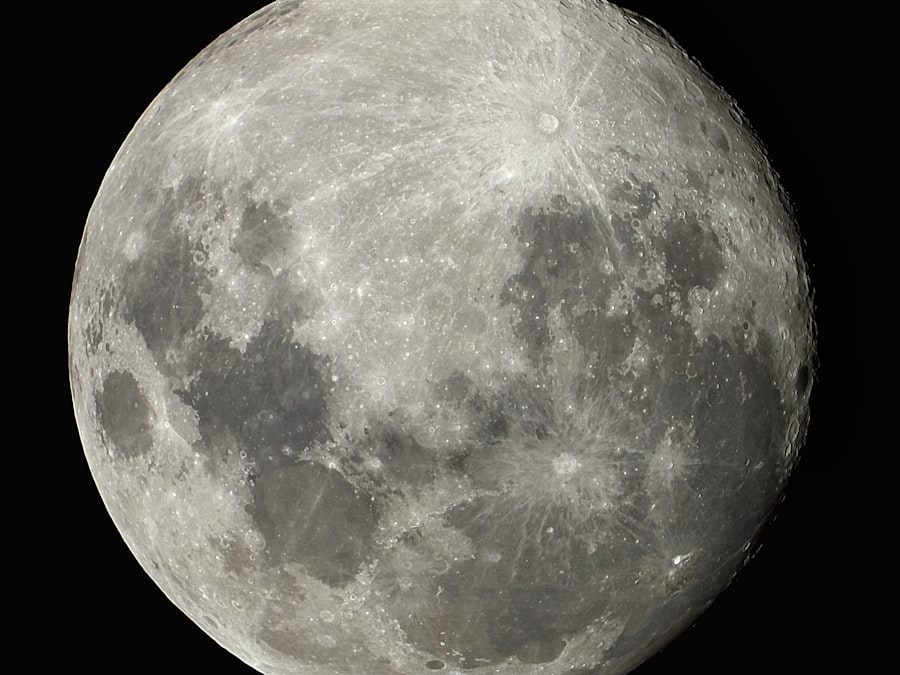The Cold War era, spanning from the end of World War II to the early 1990s, was characterized by intense geopolitical tension between the United States and the Soviet Union. This period was marked by a fierce ideological battle between capitalism and communism, with both superpowers vying for global influence. The competition extended beyond mere political and economic spheres; it permeated cultural, technological, and military domains.
The arms race, particularly in nuclear weapons, became a defining feature of this rivalry, as both nations sought to establish their dominance through military might. As the 1950s progressed, the space race emerged as a new front in this ongoing competition. The launch of Sputnik by the Soviet Union in 1957 shocked the United States and ignited fears of Soviet technological superiority.
This event not only demonstrated the USSR’s capabilities in rocketry but also raised concerns about national security. The United States felt compelled to respond, leading to a series of initiatives aimed at advancing its own space program.
Key Takeaways
- The Cold War was characterized by tensions and competition between the US and the Soviet Union.
- The 1958 Lunar Nuclear Plan was a bold and controversial strategy to detonate a nuclear bomb on the moon.
- The scientific and military rationale behind the plan was to demonstrate technological superiority and intimidate the Soviet Union.
- The political and public reaction to the plan was mixed, with concerns about the environmental impact and escalation of the arms race.
- Implementing nuclear weapons in space posed technological challenges and raised ethical and legal implications.
The 1958 Lunar Nuclear Plan: a bold and controversial strategy
The 1958 Lunar Nuclear Plan represented a radical approach to military strategy during a time of heightened tensions between the superpowers. Conceived as a means to assert American dominance in space and deter potential Soviet aggression, the plan proposed deploying nuclear weapons on the lunar surface. This audacious strategy was rooted in the belief that a visible display of military power in space would serve as a powerful deterrent against adversaries.
The plan was not merely theoretical; it was backed by serious discussions within military and governmental circles about its feasibility and potential impact. However, the proposal was met with significant controversy. Critics argued that placing nuclear weapons on the Moon would escalate an already volatile situation and could lead to catastrophic consequences.
The idea of weaponizing space raised ethical questions about the militarization of celestial bodies and the potential for conflict beyond Earth. Despite these concerns, proponents of the plan believed that it was necessary to maintain a strategic advantage over the Soviet Union, reflecting the prevailing mindset of the time that prioritized military preparedness above all else.
The scientific and military rationale behind the plan

The scientific rationale for the 1958 Lunar Nuclear Plan was rooted in advancements in rocketry and space technology that had been achieved during the early years of the space race. The United States had developed powerful launch vehicles capable of delivering payloads to lunar orbit, and there was a growing belief that nuclear weapons could be effectively deployed in this new frontier. Military strategists argued that having a nuclear presence on the Moon would provide a significant tactical advantage, allowing for rapid response capabilities against any perceived threats from the Soviet Union.
From a military perspective, the plan was seen as a way to extend deterrence beyond Earth. By positioning nuclear weapons on the Moon, the United States could potentially target Soviet cities and military installations with unprecedented precision. This capability would not only serve as a deterrent but also enhance America’s strategic posture in global affairs.
The belief was that such a show of force would compel adversaries to reconsider their aggressive postures, thereby maintaining peace through strength.
The political and public reaction to the 1958 Lunar Nuclear Plan
| Reaction | Details |
|---|---|
| Political | Strong opposition from some political leaders who feared the potential consequences of nuclear explosions on the moon. |
| Public | Mixed reaction from the public, with some expressing concern about the environmental impact and others supporting the potential scientific advancements. |
| International | Received criticism from international community, with concerns raised about the potential for escalating the arms race and the impact on global stability. |
The political landscape surrounding the 1958 Lunar Nuclear Plan was fraught with division and debate. Within government circles, opinions were sharply divided. Some policymakers viewed the plan as a necessary step to ensure national security and maintain American superiority in space.
Others expressed deep concerns about its implications for international relations and the potential for an arms race in space. The plan’s advocates argued that it was essential to counter Soviet advancements, while detractors warned that it could provoke an escalation of hostilities. Public reaction to the proposal was equally polarized.
Many Americans were captivated by the idea of space exploration and viewed it as an opportunity for national pride and technological advancement. However, there was also a significant segment of the population that feared the consequences of militarizing space. Activist groups and concerned citizens raised ethical objections, arguing that deploying nuclear weapons in space would violate international norms and set a dangerous precedent for future generations.
This public discourse reflected broader anxieties about nuclear proliferation and the moral implications of using such weapons.
The technological challenges of implementing nuclear weapons in space
Implementing the 1958 Lunar Nuclear Plan presented numerous technological challenges that could not be easily overcome. While advancements in rocketry had made lunar missions feasible, deploying nuclear weapons required sophisticated engineering solutions that were still in their infancy. The logistics of transporting nuclear warheads to the Moon, ensuring their safety during transit, and developing reliable delivery systems posed significant hurdles for scientists and engineers.
Moreover, there were concerns about the reliability of nuclear systems in the harsh environment of space.
Ensuring that these weapons would function as intended upon deployment added another layer of complexity to an already ambitious plan.
As experts grappled with these challenges, it became increasingly clear that while the concept was bold, its practical implementation was fraught with uncertainty.
The ethical and legal implications of nuclear weapons in space

The ethical implications of placing nuclear weapons in space were profound and far-reaching. Many critics argued that such actions would violate fundamental principles of peace and cooperation among nations. The idea of weaponizing celestial bodies raised questions about humanity’s responsibility to preserve outer space for peaceful exploration rather than turning it into a battleground.
This perspective resonated with advocates for disarmament who believed that nuclear weapons should be eliminated entirely rather than relocated to new frontiers. Legally, the deployment of nuclear weapons in space posed significant challenges as well. At the time, there were few international treaties governing activities beyond Earth’s atmosphere, leaving a legal vacuum regarding military operations in space.
The Outer Space Treaty of 1967 would later address some of these concerns by prohibiting the placement of nuclear weapons in orbit or on celestial bodies. However, at the time of the Lunar Nuclear Plan’s conception, there was no framework to regulate such actions, raising questions about accountability and compliance with international law.
The impact of the 1958 Lunar Nuclear Plan on the space race
The 1958 Lunar Nuclear Plan had a profound impact on the trajectory of the space race between the United States and the Soviet Union. While it ultimately did not come to fruition, its very existence underscored the lengths to which both superpowers were willing to go to assert their dominance in space exploration. The plan served as a catalyst for increased investment in both military and civilian space programs as each nation sought to outpace the other technologically.
In response to American initiatives like the Lunar Nuclear Plan, the Soviet Union accelerated its own efforts in space exploration and military capabilities. This competitive dynamic fueled a series of landmark achievements, including crewed missions and satellite launches that captured global attention. The heightened stakes of this rivalry ultimately led to significant advancements in technology and knowledge about space, even as it underscored the dangers inherent in militarizing outer space.
The legacy of the 1958 Lunar Nuclear Plan in space exploration and international relations
The legacy of the 1958 Lunar Nuclear Plan is multifaceted, influencing both space exploration and international relations for decades to come. Although it did not materialize as intended, it highlighted critical issues surrounding military activities in outer space that continue to resonate today. The discussions sparked by this plan contributed to ongoing debates about arms control and disarmament efforts aimed at preventing an arms race beyond Earth.
In terms of space exploration, the plan served as a reminder of how national security concerns can shape scientific endeavors. While subsequent missions focused on peaceful exploration rather than militarization, the specter of military competition remained ever-present. As nations continue to explore outer space today, they must grapple with lessons learned from past initiatives like the Lunar Nuclear Plan while striving for cooperation rather than conflict.
Lessons learned from the 1958 Lunar Nuclear Plan for future space strategies
The 1958 Lunar Nuclear Plan offers valuable lessons for contemporary policymakers as they navigate an increasingly complex landscape in outer space. One key takeaway is the importance of establishing clear norms and regulations governing military activities beyond Earth’s atmosphere. As more nations develop their own space capabilities, ensuring that outer space remains a domain for peaceful exploration is paramount.
Additionally, this historical episode underscores the need for international cooperation in addressing shared challenges related to security and exploration in space. Collaborative efforts can help mitigate tensions while fostering innovation and scientific advancement. By learning from past mistakes, current leaders can work towards creating frameworks that prioritize peace over militarization in this new frontier.
The role of the 1958 Lunar Nuclear Plan in shaping space policy and treaties
The discussions surrounding the 1958 Lunar Nuclear Plan played a significant role in shaping subsequent space policy and international treaties aimed at regulating activities beyond Earth’s atmosphere. As concerns about militarization grew, policymakers recognized the necessity for frameworks that would govern state behavior in outer space. This realization culminated in treaties such as the Outer Space Treaty of 1967, which established principles for peaceful exploration and prohibited nuclear weapons from being placed in orbit or on celestial bodies.
The legacy of these discussions continues to influence contemporary debates about space policy today. As nations grapple with emerging technologies like satellite warfare and anti-satellite systems, revisiting lessons from past initiatives like the Lunar Nuclear Plan can inform efforts to create robust legal frameworks that promote stability and cooperation among nations.
The significance of the 1958 Lunar Nuclear Plan in the history of space exploration and the Cold War
In summary, the 1958 Lunar Nuclear Plan stands as a significant chapter in both the history of space exploration and Cold War dynamics. It exemplified how national security concerns can drive ambitious strategies that blur lines between scientific advancement and military objectives. While ultimately unsuccessful, its existence highlighted critical issues surrounding arms control, ethics, and international cooperation that remain relevant today.
As humanity continues its journey into outer space, reflecting on initiatives like the Lunar Nuclear Plan can provide essential insights into navigating future challenges while striving for peaceful coexistence among nations. Ultimately, this historical episode serves as a reminder that while competition can spur innovation, collaboration is essential for ensuring that outer space remains a realm for exploration rather than conflict.
In 1958, the United States considered a bold and controversial plan to detonate a nuclear bomb on the Moon as a demonstration of power during the Cold War. This plan, known as Project A119, was ultimately abandoned due to potential risks and the desire to pursue peaceful space exploration. For more intriguing historical insights and lesser-known facts, you can explore a related article on the topic by visiting Hey Did You Know This. This website offers a fascinating collection of articles that delve into unique and surprising historical events.
WATCH THIS! 🤯America Tried to Nuke the Moon
FAQs
What was the 1958 lunar nuclear plan?
The 1958 lunar nuclear plan was a proposal by the United States to detonate a nuclear bomb on the moon as a show of force during the Cold War.
Who proposed the 1958 lunar nuclear plan?
The 1958 lunar nuclear plan was proposed by the United States Air Force as a part of a project called “A Study of Lunar Research Flights.”
Why was the 1958 lunar nuclear plan proposed?
The 1958 lunar nuclear plan was proposed as a response to the Soviet Union’s successful launch of the Sputnik satellite. It was intended to demonstrate American technological and military superiority during the Cold War.
Was the 1958 lunar nuclear plan carried out?
No, the 1958 lunar nuclear plan was ultimately abandoned and never carried out. The potential risks and environmental impact of detonating a nuclear bomb on the moon were deemed too great.
What was the public reaction to the 1958 lunar nuclear plan?
The 1958 lunar nuclear plan sparked public controversy and concern about the potential consequences of nuclear weapons testing in space. It also raised ethical and environmental questions about the militarization of outer space.
